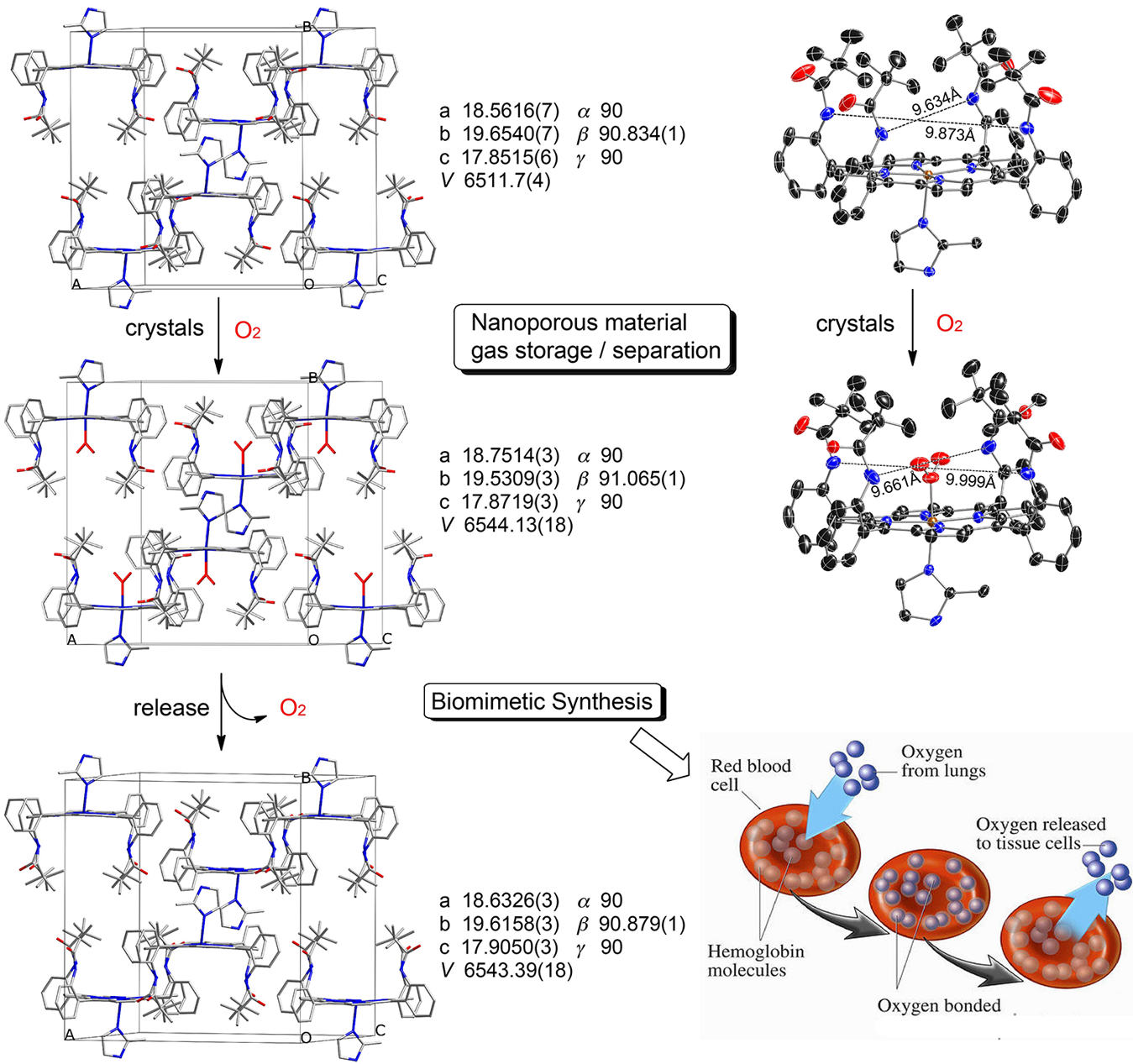Metalloporphyrin Chemistry — Functional Biomimetic Models
- AOXEN
- Published: 2019-12-06
- 5001
In this study, we work on the preparation and characterization of new metalloporphyrin compounds (especially biologically important iron). We develop functional models for the active site in Hemes, Cytochrome c oxidase (CcO) and other metalloenzymes. We apply a number of techniques to explore the properties of the models. These include methods that allow us to investigate electronic structure (Elelctron Paramagnetic Resonance and Mössbauer spectroscopy, magnetic susceptibilities, and calculations), molecular structure (X-ray and neutron diffraction), and electronic and vibrational spectroscopy (especially NRVS, IR and Raman).

Porphyrin-Based Metal Organic Frameworks
One of the fastest growing areas in materials chemistry is metal-organic frameworks (MOF), emerging as a new class of inorganic-organic hybrid materials. These materials are potentially useful in many applications ranging from gas storage/separate to catalysis. In our studies porphyrins are chosen as molecular building blocks to build porphyrin-based metal-organic frameworks--Metal Porphyrin Frameworks (MPFs). Porphyrins are important biomolecules and have been extensively studied over the past several decades. Considering the fact that many interesting physical properties of porphyrins are closely related to the metal centers incorporated inside the porphyrins, the research outcome from such biomimetic framework solids may shed new light on multifunctional nanomaterials.